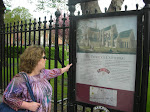Jacqueline Grennon Brooks and Martin G. Brooks offer five key principles of constructivist learning theory below. These would be used to guide curriculum structure and lesson planning.
Connectivism is more like an Excel spreadsheet, which accommodates the addition of rows and columns any place within the spreadsheet at any time. Connectivism is more like planning a cross country trip where we decide what, where and when we will visit during the planning process. However, once we get going we run into reality of detours, seasonal hours and life. Life is the important piece in the connectivism puzzle because it allows for the changing of the program on the fly, just like our Excel spreadsheet. If we encounter a flat tire next to a dude ranch, we could find it an interesting and convenient addition to our journey, especially if, we need to wait for a repair. Connectivism allows us to change, to accommodate our existing structure, and add new items, to remove the obsolete, or move beyond something we once found interesting.
| The Element |
